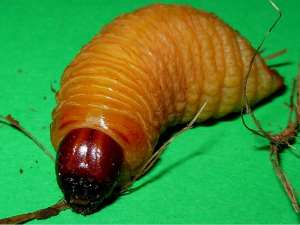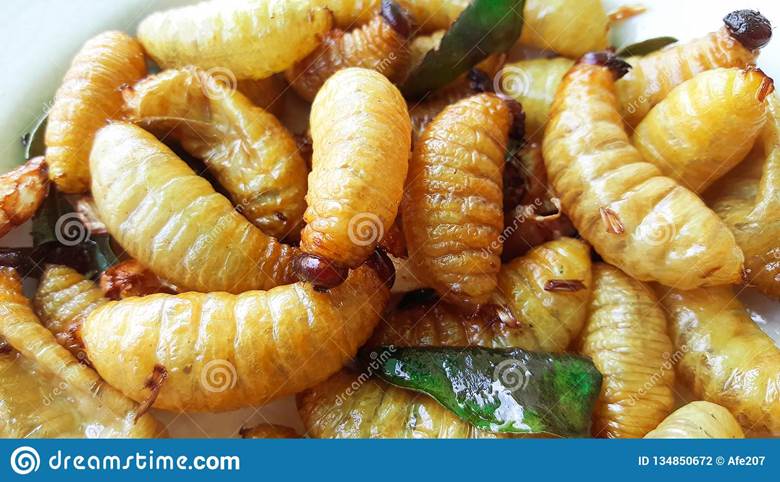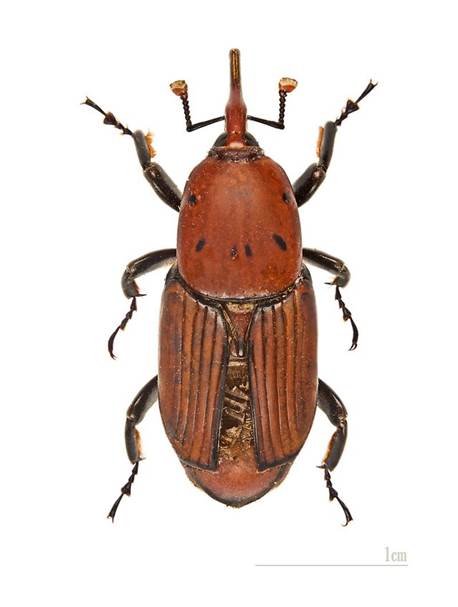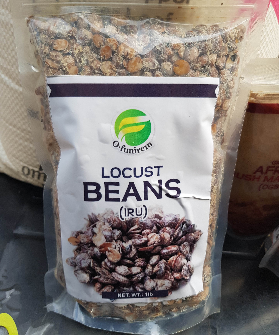
In the era of covid 19, immune boosting foods have become the norm and the most sought after medicine now. The lesson today in this covid 19 era is that: the best medicine is your immune system and not the physician. This article highlights the scientific studies on the health benefits of akokoro and Dawadawa. For those who have stayed in the villages before then you know what time is it now! But those city oriented people you may be wondering; why on earth should I eat worm? Is it safe to eat worm? Is it healthy? Is it nutritious? What can I benefit from eating worm? These few questions and much more could be going on in your mind at the sight of this article.
You can eat some types of worms but not all worms, it is safe to eat certain worms but not all worms, certain worms are healthy, certain worms are nutritious and there are several things you can benefit from eating worms. Well, one of such beneficial worms is the sago worm, which is equally known as Akokoro, coconut worm, palm tree worm, palm grubs, palmetto grub, palm tree weevil, edible maggot, Asian palm weevil, grugru, grew-grew or sago palm weevil.
What are Sago Worms?
Sago worm is the larva of the red palm beetle and since this is the case, another concern is if it is safe to eat insects? Yes, it is! Studies reveal that insects are highly valuable and essential source of vitamins and minerals such as calcium, protein, fat etc. Researchers and nutritionists also attest that certain edible insects have nutritional components that are comparable with that of fish and meat. Apart from being a staple food source for most people, the sago worm is also a major source of income for many households especially the rural communities. Sago worm is the larvae of the red palm weevil, a species of snout beetle that is botanically known as Rhynchophorus ferrugineus. According to researchers, this insect belongs to the family of Dryophthoridae, subfamily Rhynchophorinae, and the tribe of Rhynchophorini. The genus Rhynchophorus comprises of 10 species, with 7 of them such as Rhynchophorini ferrugineus and Rhynchophorini vulneratus attacking mainly palm trees, coconut tree (C. nucifera) and date palm (P.dactylifera).
Life cycle
The complete metamorphosis is made up of four stages that begin with the egg stage of the insect which later is transformed into larva ( very ravenous and active), from larva to the pupa (inactive) stage and finally to the adult form of insect. The incomplete metamorphosis on the other hand is made up of just three stages, the egg stage, nymph (almost looks like the adult but immature) and the adult form
 Sago Worm, Larvae From The Red Palm Weevil Stock Photo - Image of ...
Sago Worm, Larvae From The Red Palm Weevil Stock Photo - Image of ...
Adult beetle measures approximately 2 to 5 centimetres long with a reddish rusty appearance. A weevil is a type of beetle that belongs to the Curculionoidea superfamily. Red palm weevil is native to tropical Asia before spreading to other parts of Africa, America and Europe. Adult Rhynchophorini palm weevil RPW measures between 30 to 40 mm in length. Weevil larvae normally bore holes in a palm tree, date palm, sugarcane or coconut tree trunk thus incapacitating and finally killing the host tree. This is part of the reason this insect is regarded as a damaging pest in a plantation. Adult Rhynchophorini palm weevil RPW measures between 30 to 40 mm in length. Weevil larvae normally bore holes in palm tree, date palm, sugarcane or coconut tree trunk thus incapacitating and finally killing the host tree. This is part of the reason this insect is regarded as a damaging pest in a plantation
The shiny beetle egg is oblong in shape and creamy white in colour. It measures approximately 2.62 mm long and 1.12 mm wide. The larvae grow approximately 35 mm long and is distinguished by its white body and brownish head. The body is made up of 13 segments with the mouthparts being quite strong and properly developed. Rhynchophorini weevils are distinguished by their ability to infest palm trees, date palm tree and coconut trees that are below 20 years of age. Even though the adult harms the infested trees by feeding on them, the major damages are manifested through the burrowing of the larva deep into the innermost parts of the infested trees. The adult females of Rhynchophorini RPW can lay up to 200 eggs at a time.

The adult Sago Worm
Nutritional Values of Akokoro (Sago Worm)
In a recent 2020 study by Kohler et al, the nutrient content of the edible insect was measured using chromatographic and spectrometric methods. The results showed that it contains 10.39 g protein and 17.17 g oil/ 100 g fresh weight. The sago grub meets the FAO/WHO requirements of 40% essential amino acids and a 0.60 ratio between essential to non-essential amino acids. Its limiting amino acid is methionine + cysteine. The major fatty acids found in the sago grub are palmitic (42%), oleic (45%), and linoleic (3%) acids. Although vitamin E is exclusively produced by photosynthetic organisms, a gram of sago grub oil contains 51 μg vitamin E, which is composed mainly of tocopherols (92%). In contrast with palm oil, the sago grub oil contains δ-tocopherol (0.12 μg/g oil), and a significantly high amount of β-tocopherol (3.85 μg/g oil). It is a source of zinc and magnesium and contains safe levels of heavy metals. Based on these nutritional properties, the Indonesian sago grub can be considered as a good source of nutrients, and its propagation and utilization should be encouraged especially in other areas of Indonesia and maybe in neighboring countries where they are also endemic, and where malnutrition is prevalent. The consumption of edible insects should be considered as a component of dietary diversification – a sustainable way of alleviating the nutritional status of the population.
Also a 2019 review paper by Ayensu et al which investigate the impact of edible insect consumption on human health, the authors conducted a search in PubMed Central, BioMed Central, Plosone, Cochrane, Google Scholar, Google Search and bibliographies for all human studies on the impact of edible insect consumption on human health published from January 1990 to April 2018. The result revealed that, Twelve studies met the inclusion criteria. Consumption of cereals fortified with edible insects improved iron status and growth in infants and led to the development of life threatening anaphylactic reactions in sensitive people. They concluded that edible insects are nutritious.
A 2017 study by Nirmala et al which involved Children between aged 1–5 years were allocated to a sago worm inclusive diet (n=10) and to a control group eating a usual diet, but without sago worms (n=13). Snacks were served once per day (100 g) for 45 days and designed to contain similar amounts of vegetables (carrots and long beans) and other ingredients including rice, sticky rice, cassava, sweet potato, banana, or tofu with or without sago worms. Food preference was ascertained by interview. Anthropometric measurements were taken at baseline and the endpoint. It was revealed that, after mixing all food stuffs into one product for instance nasi gurih, protein and fat content in the intervention group was higher compared to control group (8.8 g and 7.3 g vs 4.7 g and 0.5 g respectively). In the intervention group receiving complementary feeding with sago worms, children’s height changed minimally as did the control group (0.3 vs 0.2 cm); no difference was observed between the groups regarding weight or height. Conclusions: Sago worm consumption can diversify the diet through usage in various dishes, so improving its overall nutritional quality. Worm addition in an intervention program does not compromise, but maintains nutritional value. Local use adds affordability and sustainability to the food and health systems in a sago-consuming culture, so contributing to food security.
In another research conducted by Kasi et al 2017 to determine the average length and weight of sago grub in various instar larval stage, and to determine total protein content in various instar larval stage by using kjeldahl method. The results showed that the highest levels of total protein obtained at the third instar larval stage (12.04%) and the lowest in the first instar larval stage (8.02%). Total protein will be decline after the third instar larval stage for the proteins used for pupation in the process of metamorphosis Elemo et al., (2011) report that the dried and defatted sago worm is comparable to an egg protein.
On a normal, a 1g/100gram dry weight of processed sago worms will give the following nutritional benefits given below:
Nutritional Composition Sago Worm Larvae (g/100g dry weight)
Protein 25.8g
Fat 38.5g
Ash 2.1g
Carbohydrates 33.2g
Energy (kcal) 583
Amino Acids (g/100g dry weight)
Aspartic acid 2.29g
Threonine* 1.15g
Serine 1.33g
Glycine 1.04g
Alanine 1.37g
Valine* 0.81g
Methionine* 0.27g
Isoleucine* 0.75g
Leucine* 1.62g
Tyrosine* 0.97g
Phenulalanine* 0.73g
Histidine* 1.02g
Lysine* 1.72g
Arginine 1.62g
Tryptophan* 0.23g
*Essential amino acid
Why Sago Worms are Essential
Naturally ,they contain high amount of fatty acids especially oleic acid (40.1%); and linoleic (n-6) (13.0%), so there is no point still using oil to fry them. They are sweeter when fried on an empty pot rather than using oil. It takes roughly about 5minutes to fry them. The aroma that come from the frying process alone will make you salivate and hunger for more of them, really they are tasty and sweet.
Have you ever wondered why sago worms are essential? Here are some incredible benefits of sago worms that will be of utmost interest to you. Culinary uses
Coconut worm or red palm tree grub is considered a nutritious and safe delicacy. Different countries have different sago recipes, for example, It can be eaten either raw or fried, roasted, steamed, toasted, barbequed, cooked, battered and deep fried. Sago worms can also be used for preparing stews, soup, sago salad, sago kebabs, sago kabobs, satay sago and sago pudding.
It can also be coated with sago flour before deep-frying. Sago worm delicacies are equally served during events, ceremonies, festivals and special occasions. In Vietnam, the red palm tree grub is referred to as đuông dừa or coconut beetle-larva. The people usually eat the grub raw with fish sauce.
 benefits of sago worms
benefits of sago worms
Antimicrobial Activities
Mazza et al., (2011) investigated the antimicrobial activity of the cuticular surface of the adults, larvae and eggs. They tested this activity against the Gram-positive bacteria Bacillus subtilis (Ehrenberg) Cohn and Bacillus thuringiensis Berliner, the Gram-negative bacterium Escherichia coli Escherich, and the entomopathogenic fungi Beauveria bassiana (Balsamo) Vuillemin and Metarhizium anisopliae (Metchnikoff) Sorokin. They also conducted a similar analysis with the hemolymph of R. ferrugineus larvae infected by Pseudomonas aeruginosa (Schroter) Migula, Staphylococcus aureus Rosenbach and E. coli. The study revealed that there are polar substances present on the body of both adults and larvae of the red palm weevil. Thus they offer a protective barrier against microorganisms due to their antimicrobial properties.
Pharmaceutical Purposes
According to Elemo et al., (2011), the essential fatty acid and linoleic acid (3.51% of total lipid) found in red palm weevil larva oil make it very suitable for pharmaceutical use.
Aid Easy Digestion
Due to the high dietary fibre found in the red palm grubs, they can serve as a great source of dietary roughage. As a result, they aid easy digestion of food and helps to prevent constipation and flatulence.
Economic Benefits
Sago worms offer economic opportunities to some people especially in the underdeveloped and developing parts of the world. The worms are sold for income generation.
Studies on DAWADWA
 10 HEALTH BENEFITS OF AFRICAN LOCUST BEANS
10 HEALTH BENEFITS OF AFRICAN LOCUST BEANS
The African locust bean tree (Parkia biglobosa) is a deciduous tree that grows 7-30 meters tall throughout Ghana. The pods (locust beans) of the tree average 30-40 cm long and are filled with up to 30 seeds. These seeds are fermented and made into a strong aromatic cakes sold as a food flavoring called dawadawa, often used in the preparation of most soups and stews and recommended for poor communities whose diets lacks proteins and vitamin B.
Local research has shown that locust bean helps to promote good sight and drives away hypertension and diseases conditions like stroke and diabetes. It also contains tannins, astringent substances found in many plants. Foods rich in tannins are often recommended for treatment of diarrhea. The portion of carob that is made into locust bean gum contains soluble fibre in the galactomannan family. Like other forms of soluble fibre, it has shown potential benefit for enhancing weight loss and controlling blood sugar levels.
The African locust bean tree has also been found to possess wonders. For instance, the pulverised bark of the tree is employed in wound healing and serves as one of the ingredients used in treating leprosy. The decoction of the bark is also used as bath for fever and as a hot mouth wash to steam and relieve toothache in Cote d’Ivoire.
Studies on Health Benefits
In a 2018 study by Adjepong et al aim to identify locally available foods that can be utilized by Northern Ghanaians to improve child growth status. Food grade oils, particularly palm oil and shea butter, contained higher saturated and monounsaturated fatty acids(FAs) than seeds or nuts. Soybean, was significantly higher in the essential omega-3 Fatty acids alpha-linolenic acid (2.98 mg/g), whereas neri seed (68.4 mg/g) and fermented dawadawa (seed; 56.3 mg/g) had significantly higher amounts of total polyunsaturated Fatty acids than all other foods. Iron levels in soybean (353 mg/kg), neri (282 mg/kg) and fermented dawadawa (165 mg/kg) were also the highest of all foods. Together, these foods may be useful for future intervention to curb stunting and iron-deficiency anemia. The most valuable parts of the locust bean are high in lipid (29%), protein (35%), carbohydrate (16%), and is a good source of fat and calcium for rural dwellers.
On Hypertension and Antidiabetic
The hypoglycaemic effect of fermented seeds of Dawadawa (PB; African locust bean), a natural nutritional condiment that features frequently in some African diets as a spice, was investigated by Odetola et al 2006 in alloxan-induced diabetic rats. Its effect was compared with that of glibenclamide (Daonil; Sanofi-Aventis, Paris, France), a reference antidiabetic drug. The effects of Dawadawa on lipid profiles were also examined. In order to assess the hypoglycaemic and hypolipidaemic effects of aqueous and methanolic extracts of Dawada on experimental animals, fasting plasma glucose (FPG), total cholesterol, triglyceride, high-density lipoprotein (HDL) and low-density lipoprotein (LDL) were determined.
The results of the study demonstrate that both aqueous and methanolic extracts of fermented seeds of Dawadawa exert a hypoglycaemic effect; hence, Dawadawa has an antidiabetic property. However, only the aqueous extract of Dawadawa ameliorated the loss of bodyweight usually associated with diabetes. Although the aqueous extract has a favourable lipid profile, which is probably an indication of its possible anti-arteriogenic property (hypertension and ischaemic heart diseases being common complications in diabetes mellitus), the methanolic extract shows possible contraindication to ischaemic heart diseases
Another 2016 study by Ogunyinka et al investigated the modulatory potential of Dawadawa protein isolate on serum testosterone (sTT) level as well as its influence on biomarkers of oxidative stress in brain and testes of streptozotocin-induced diabetic male rats. Animals were made diabetic by single intraperitoneal administration of streptozotocin (STZ; 60 mg/kg body weight). These results provide evidence that Dawadawa isolate could protect the brain and testicular tissues against oxidative stress induced by STZ(Streptozotocin), via modulation of serum testosterone concentration and also by enhancing antioxidant defence system in STZ-diabetic rats.
Another study by Komolafe et al 2017 sought to investigate the in vitro antioxidant activity, angiotensin-I-converting enzyme (ACE) inhibition and effects of aqueous-methanolic extract of Dawadawa on mitochondrial membrane potential and reactive oxygen species (ROS) generation. The study concluded that Parkia biglobosa leaf(Dawadawa) exhibits considerable ACE inhibitory effect, antioxidant activity and affects mitochondrial redox chemistry. These present findings also justify the ethnobotanical applications of the plant in the indigenous system of medicine as hypertensive drug.
In another result published in Science Journal based in Dakar, Senegal, researchers tried out locust beans on rats to find out whether it actually has any impact on controlling blood pressure and the result obtained showed that adequate doses of locust beans helped to decrease arterial blood pressure.
The findings showed that the diastolic blood pressure measurement enjoyed more reduction than even the systolic blood pressure. It also revealed the many wonders of African locust bean tree. The pulverised bark of African locust bean tree, for instance, is employed in wound healing and serves as one of the ingredients that are used in treating leprosy.
Studies on Probiotic
 African locust bean tree (Dawadawa)
African locust bean tree (Dawadawa)
A recent 2020 study by Nwagu et al results indicate that the Bacillus cultures for “daddawa” production are good candidates for probiotics and have the potential for application in both animal and human formulations for increased health benefit to consumers.
Mokoena et al 2016 investigated the probiotic effect of Dawadawa. The authors reported that diverse African traditional fermented foods and beverages, produced using different types of fermentation, have been used since antiquity because of their numerous nutritional values. Lactic acid bacteria (LAB) isolated from these products have emerged as a welcome source of antimicrobials and therapeutics, and are accepted as probiotics. Probiotics are defined as live microbial food supplements which beneficially affect the host by improving the intestinal microbial balance. Currently, popular probiotics are derived from fermented milk products. However, with the growing number of consumers with lactose intolerance that are affected by dietary cholesterol from milk products, there is a growing global interest in probiotics from other food sources and Dawadawa shows potential probiotic effect. In conclusion both Akrokoro and Dawadawa have numerous health benefits to support the immune system.
DISCLAIMER This post is for enlightenment purposes only and should not be used as a replacement for professional diagnosis and treatments. Remember to always consult your healthcare provider before making any health-related decisions or for counselling, guidance and treatment about a specific medical condition.
The writer is an honorary Professor of Holistic Medicine-Vinnytsia State Pedagogical University, Ukraine and currently, LLB law/MBA Student. He is the formulator of FDA approved Nyarkotey Hibiscus Tea for Cardiovascular Support and wellness, Men’s Formula for Prostate Health and Women’s Formula for wellness. Contact: 0241083423/0541234556




 Lay KPMG audit report on SML-GRA contract before Parliament – Isaac Adongo tells...
Lay KPMG audit report on SML-GRA contract before Parliament – Isaac Adongo tells...
 Supervisor remanded for stabbing businessman with broken bottle and screwdriver
Supervisor remanded for stabbing businessman with broken bottle and screwdriver
 NDC watching EC and NPP closely on Returning Officer recruitment — Omane Boamah
NDC watching EC and NPP closely on Returning Officer recruitment — Omane Boamah
 Your decision to contest for president again is pathetic – Annoh-Dompreh blasts ...
Your decision to contest for president again is pathetic – Annoh-Dompreh blasts ...
 Election 2024: Security agencies ready to keep peace and secure the country — IG...
Election 2024: Security agencies ready to keep peace and secure the country — IG...
 People no longer place value in public basic schools; new uniforms, painting wil...
People no longer place value in public basic schools; new uniforms, painting wil...
 'Comedian' Paul Adom Otchere needs help – Sulemana Braimah
'Comedian' Paul Adom Otchere needs help – Sulemana Braimah
 Ejisu by-election: Only 33% of voters can be swayed by inducement — Global InfoA...
Ejisu by-election: Only 33% of voters can be swayed by inducement — Global InfoA...
 Minority will expose the beneficial owners of SML, recover funds paid to company...
Minority will expose the beneficial owners of SML, recover funds paid to company...
 Prof. Opoku-Agyemang has ‘decapitated’ the NPP’s strategies; don’t take them ser...
Prof. Opoku-Agyemang has ‘decapitated’ the NPP’s strategies; don’t take them ser...
